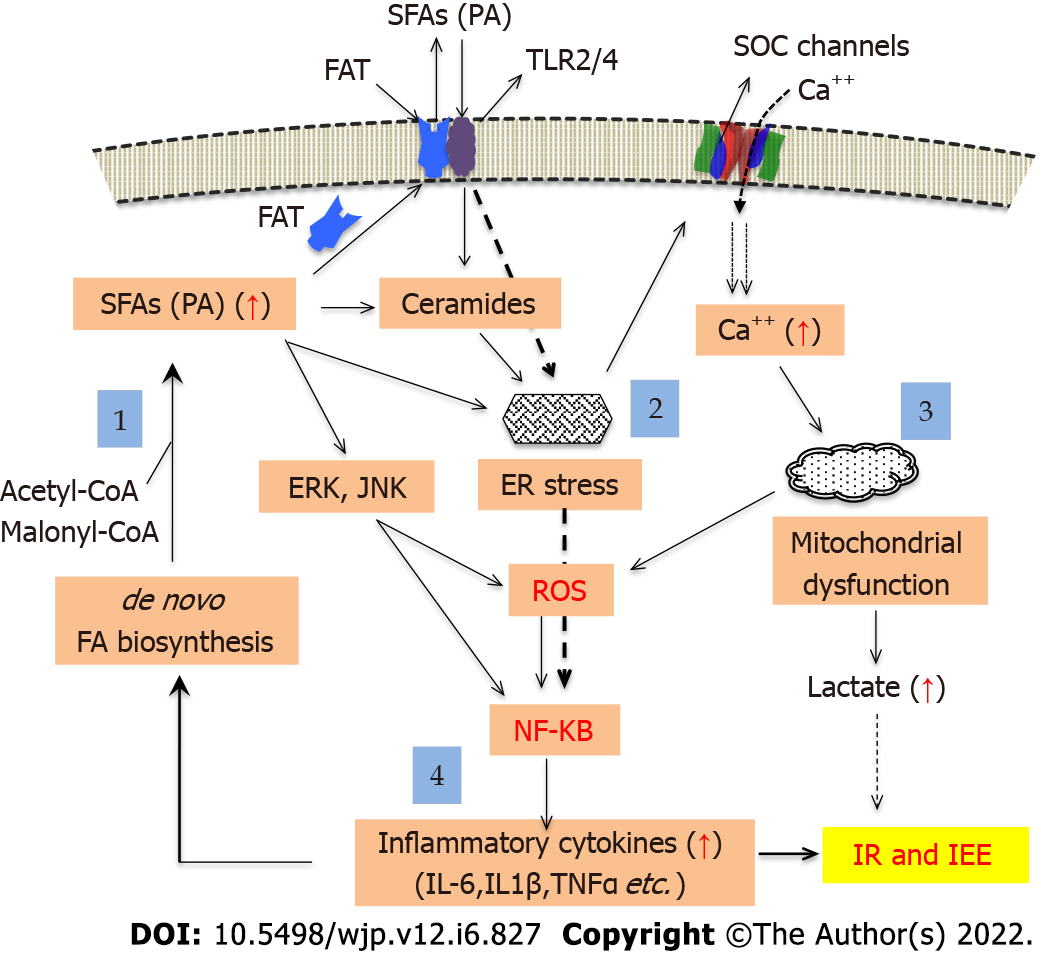Copyright
©The Author(s) 2022.
World J Psychiatry. Jun 19, 2022; 12(6): 827-842
Published online Jun 19, 2022. doi: 10.5498/wjp.v12.i6.827
Published online Jun 19, 2022. doi: 10.5498/wjp.v12.i6.827
Figure 5 Mechanisms underlying saturated fatty acids-(palmitic acid)-induced insulin resistance and impaired energy expenditure.
Saturated fatty acids (SFAs) are synthesized de novo in the cytoplasm from acetyl-CoA and malonyl-CoA (light blue box 1), and are transported by fatty acid transporter proteins from intracellular space to the membrane and to the extra cellular space. Excess SFAs-palmitic acid (PA) can also be converted into ceramides, which together with PA can induce endoplasmic reticulum (ER) stress via depletion of stored calcium (light blue box 2). ER stress leads to increased calcium influx via plasma membrane-bound store operated calcium channels, resulting into the elevation of cytoplasmic and mitochondrial calcium and production of reactive oxygen species (ROS) as a result of mitochondrial dysfunction (light blue box 3). Both PA and ceramides can also activate plasma membrane TLR2/4 receptor resulting in the activation of MAPK/ERK and JNK pathways. Activation of these pathways leads to the production of ROS and NF-κB activation (light blue box 4), which enhances expression of inflammatory cytokine genes resulting into generation of inflammatory response and development of insulin resistance (IR) and impaired energy expenditure (IEE). SFA-induced mitochondrial dysfunction also stimulates anaerobic glycolysis leading to enhanced production of lactate, which also contributes in the development of IR and IEE. SFAs: Saturated fatty acids; PA: Palmitic acid; SOC: Store operated calcium; ROS: Reactive oxygen species; ER: Endoplasmic reticulum; IR: Insulin resistance; IEE: Impaired energy expenditure.
- Citation: Khan MM. Disrupted leptin-fatty acid biosynthesis is an early manifestation of metabolic abnormalities in schizophrenia. World J Psychiatry 2022; 12(6): 827-842
- URL: https://www.wjgnet.com/2220-3206/full/v12/i6/827.htm
- DOI: https://dx.doi.org/10.5498/wjp.v12.i6.827









